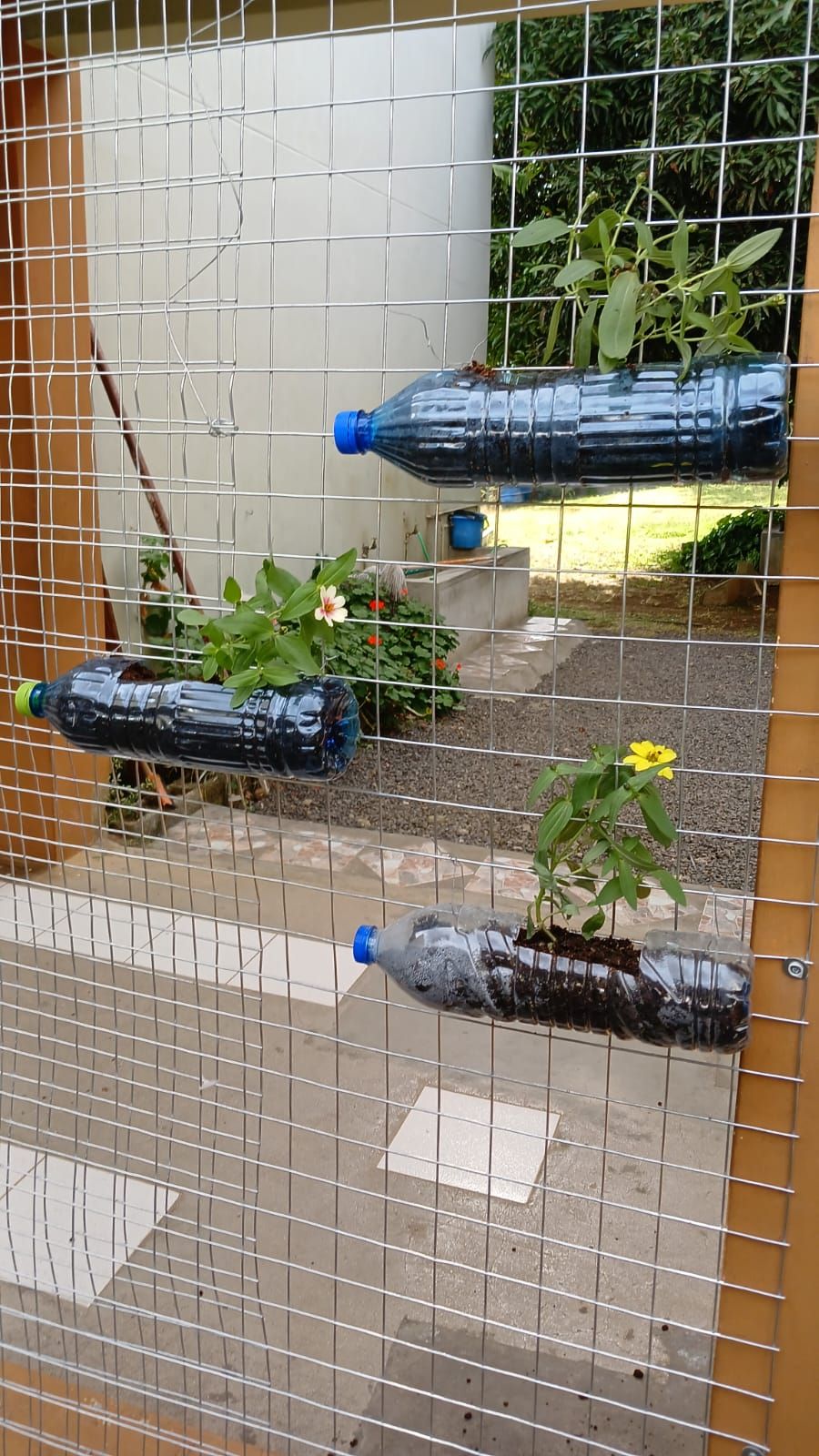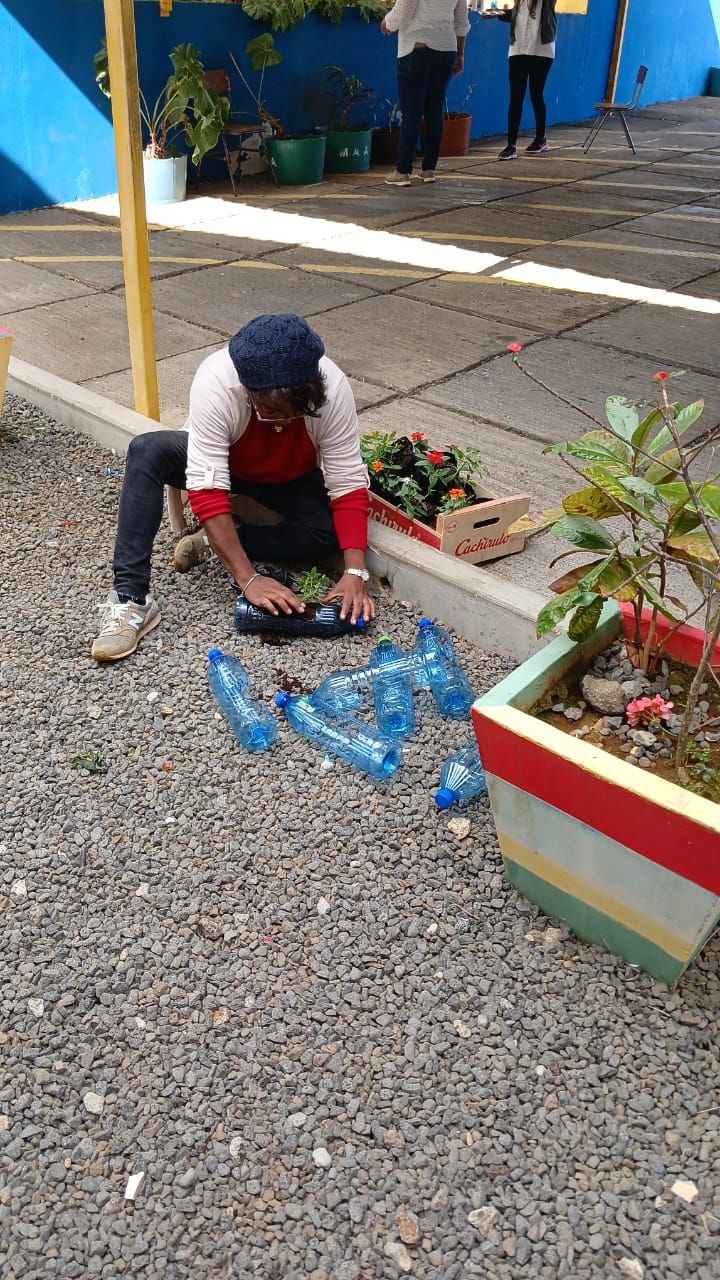@Shakhnoza That sounds like a fantastic Project-Based Learning (PBL) initiative focused on herbal plants and their benefits! This is an excellent example of how PBL can be used to engage students in real-world, interdisciplinary learning
-
Activities and resources for teaching about Climate Change
-
@Reham125b5a4afa Sounds great - it is like "walk what you preach" approach
-
@Shakhnoza said in Activities and resources for teaching about Climate Change:
Alexey becomes a symbol of hope and continues to work to improve the ecology of the planet, passing on his knowledge to the next generations.
Gameplay
Exploring the world: The player travels through the open world, explores destroyed territories and collects resources.
Solving puzzles: Solving ancientWow! This is a great idea for the lesson, thank you for sharing!
-
@Ana_moderator
Dear colleagues, in addition to paper recycling, we also gave new life to plastic and tried to share our ideas with our colleagues.
This is made from a plastic bag.(https://drive.google.com/file/d/18hNEMq5FXfqbMp8AWSdXgCP9ikqCK_fg/view?usp=drivesdk)
This vase is made from a bowl of liquid.
(https://drive.google.com/file/d/18WmvnerAPCH-4sIBbnsxUmJviaCwCu8o/view?usp=drivesdk)
And this is from disposable cups.
(https://drive.google.com/file/d/18LYMQ5i0_A6RoNKq6t57jFMQXgg3KBjI/view?usp=drivesdk)And what did you make of plastic?
Ani Bareghamayan
Art teacher
Address: Armenia -
@Samar-Mohamed
Hello Samar,
The concept of 3Rs can be encouraged among learners to prevent plastic pollution: reduce, reuse and recycle. In my school, we are sensitising students about protecting the environment. Parents and members of the community are involved in school activities to prevent plastic pollution. Plastic bottles available at school are being transformed into flower pots and students are encouraged to plant their favourite flowers. -
@Ani-Bareghamyan
Hello,
In my school, various activities are being organised to implement the 3 Rs: Reduce, Reuse and Recycle. Students are different grades are included in the project.


-
@Ana_moderator
Activities for Teaching Climate Change
Interactive Simulations: Use online tools like NASA's Climate Kids or the UN's Climate Change: Take Action Now to simulate the effects of climate change.
Classroom Discussions: Hold discussions on recent climate news, encouraging students to share their thoughts and propose solutions.
Project-Based Learning: Assign projects where students research local climate issues and present their findings.
Field Trips: Visit local environmental organizations, weather stations, or ecosystems affected by climate change.
Experiments: Simple experiments, like measuring temperature changes with and without greenhouse gases, to demonstrate the greenhouse effect.
Art and Writing: Have students create art or write essays about the impact of climate change and ways to combat it.
Resources for Teaching Climate Change
NASA Climate Kids: Provides interactive games, activities, and information tailored for younger audiences.
National Geographic Education: Offers lesson plans, videos, and articles on various climate-related topics.
EPA Climate Change Website: Includes educational materials, lesson plans, and data on climate change.
Climate.gov: Provides a wealth of information, including data sets and teaching resources.
TED-Ed Lessons: Features videos and lessons on climate science and solutions.
IPCC Reports: Although technical, these reports provide in-depth scientific data and findings on climate change. -
Dear @Housna
You have done a great job, keep it up. I have planned to organize an exhibition this year from the waste of plastic bags and plastic bottles, which we will collect from the area of the nearby river. We hope it will work, so I will introduce the children to the problem of the global ocean.Ani Bareghamayan
Art teacher
Address: Armenia -
@Abdul_Rafay77
Thank you very much for introducing us to useful sites.Ani Bareghamayan
Art teacher
Address: Armenia -
@Ani-Bareghamyan I'm glad for your words.
-
@Ana_moderator Thanks Ana! it is very helpful.
Afshanshah pst ggps hani
Hyderabad,sindh Pakistan -
@Ana_moderator
Studying climate change will help us understand why global temperatures continue to rise, how the climate affects us, and how we can tackle this challenge before things get much worse
There are a number of effective teaching strategies that can be used to teach climate change, such as using hands-on activities, having students conduct research projects,by multimedia ,and i mostly like to teach by multimedia presentation by showing them pictures and videos also -
@Ana_moderator
Climate is not a problem, climate is fact of earth and we all want to safe the environment but question is how can we safe?
Now come to the point,
If we plant the tree and care of trees climate we will safe and doing better,
Point carbon reduces on earth it's best way,
Point plastic using is also reduce.
This is my pointBurfat Ali
-
@Ana_moderator Hi Ana mam. Climate change is the biggest problem for all living creatures.As a humanity its our duty to save our loving mother planet and its creatures .so as a teachers we are the lucky one that we have a platform and we use it according to demands .Teaching about climate change requires a comprehensive approach that incorporates various resources and strategies to engage students and promote deeper understanding. Here's a suggested framework:
-
Introduce the basics: Start with the fundamentals of climate change, including the greenhouse effect, carbon cycle, and the impact of human activities on the environment.
-
Use visual aids: Incorporate images, videos, graphs, and charts to illustrate complex concepts and show real-world examples.
-
Real-world examples: Use case studies, news articles, and documentaries to connect climate change to local and global issues.
-
Hands-on activities: Engage students in experiments, simulations, and projects that demonstrate climate change principles.
-
Encourage critical thinking: Foster discussions, debates, and problem-solving exercises to develop critical thinking and solution-focused skills.
-
Invite guest speakers: Host experts, researchers, or activists to share their experiences and insights.
-
Incorporate storytelling: Use narratives, films, or books to convey the human impact of climate change.
-
Make it local: Connect climate change to students' own communities and experiences.
-
Provide resources: Offer access to reliable sources, such as:
- National Oceanic and Atmospheric Administration (NOAA)
- Intergovernmental Panel on Climate Change (IPCC)
- NASA Climate Change
- Climate Central
- The Climate Reality Project
- TED Talks on climate change
-
Encourage action: Empower students to take action through projects, campaigns, or personal choices.
Some recommended resources include:
- Documentaries: "An Inconvenient Truth," "The 11th Hour," "Racing Extinction"
- Books: "The Uninhabitable Earth" by David Wallace-Wells, "Climate Change: A Very Short Introduction" by Mark Maslin
- Online courses: Coursera, edX, and Udemy offer climate change courses
Afshanshah pst ggps hani
Hyderabad,sindh Pakistan -
-
@BRYANb8875625e5 Hi BRYAN.Its an amazing work .
Afshanshah pst ggps hani
Hyderabad,sindh Pakistan -
First of all , the students need to teach the difference between climate change and weather which refer to different aspects of atmospheric conditions, though they are often interconnected. Here’s a breakdown of their differences:
Definition:
Weather: Refers to the short-term conditions of the atmosphere at a specific place and time. It includes elements such as temperature, humidity, precipitation, wind, and visibility. Weather can change from minute to minute, hour to hour, or day to day.
Climate Change: This describes long-term changes in the Earth's climate, specifically alterations in temperature, precipitation patterns, and other climate metrics over extended periods (typically decades to centuries). Climate change involves trends and shifts in the average weather conditions over a long timeframe.Timescale:
Weather: Short-term (minutes to days).
Climate Change: Long-term (decades to centuries).Scope:
Weather: Local or regional, specific to a particular area at a given time.
Climate Change: Global or regional, observed over large areas and extended periods.Predictability:
Weather: Generally predictable in the short term using weather forecasts.
Climate Change: Predictable over long periods based on scientific models and data, though there is some inherent uncertainty in long-term predictions.Impacts:
Weather: Affects daily activities and short-term conditions (e.g., whether to carry an umbrella).
Climate Change: Has broad, long-term impacts such as sea-level rise, changes in biodiversity, and shifts in weather patterns that can affect agriculture, ecosystems, and human societies on a global scale.In summary, weather is what we experience day-to-day, while climate change refers to the longer-term shifts in atmospheric patterns that can influence the general trends in weather over time
-
Hands-on activities to teach green practices and environmental awareness:
-
School Garden Project: Create and maintain a school garden where students can learn about plant growth, composting, and organic farming.
-
Recycling Challenge: Organize a recycling competition where students sort waste into appropriate bins and learn about the recycling process.
-
Energy Audits: Have students conduct an energy audit of their school or homes to identify ways to save energy, then implement their suggestions.
-
DIY Eco-Friendly Products: Make items like reusable shopping bags, beeswax wraps, or homemade cleaning products to demonstrate sustainable alternatives to single-use products.
-
Water Conservation Projects: Install rain barrels to collect rainwater for watering plants and create experiments to measure and reduce water usage.
-
Nature Walks and Cleanups: Take students on nature walks to observe local ecosystems and participate in clean-up activities to understand the impact of littering.
-
Build Bird Feeders: Construct bird feeders from recycled materials and observe local wildlife, discussing the importance of supporting local biodiversity.
These activities provide practical experiences and foster a deeper understanding of environmental stewardship.
HaNifa memOn
-